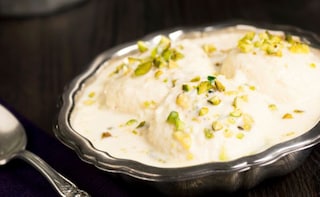I have to confess that for the longest time I didn’t know the difference between Rasmalai and Rosogollar Payesh, till I actually ate the former, which literally translates to ‘juice’ from ‘ras’, and ‘cream’ from ‘malai’.
Advertisement
Advertisement
Advertisement
Advertisement
For the latest food news, health tips and recipes, like us on Facebook or follow us on Twitter and YouTube.
Advertisement
